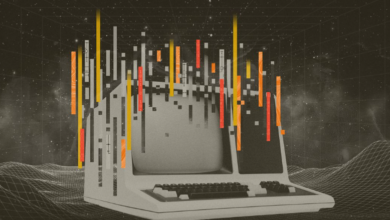Immersive Futures: Virtual and Augmented Reality in a Changing World

Introduction
Virtual Reality (VR) and Augmented Reality (AR) are redefining how we interact with the world. From immersive gaming experiences to transformative healthcare applications, these technologies are bridging the gap between the physical and digital realms. In this changing world, the rise of VR and AR signals a future where reality is not limited by physical boundaries. This article explores their evolution, current applications, challenges, and their transformative potential in the years to come.
What are Virtual and Augmented Reality?
VR and AR, though often mentioned together, serve distinct purposes. Virtual Reality (VR): VR immerses users in a fully digital environment, isolating them from the physical world. It’s widely used in gaming, simulations, and training. Augmented Reality (AR): AR overlays digital information onto the real world, enhancing our physical environment. Think of apps like Pokémon GO or AR-based navigation systems. While VR focuses on creating a new reality, AR enhances our current one, making both technologies complementary in their applications.
The Evolution of Immersive Technologies
The journey of VR and AR began decades ago, evolving with advancements in computing power, AI, and sensor technology. 1960s-70s: Early VR systems like the Sensorama and the first head-mounted displays laid the groundwork. 1980s-90s: AR made its debut in industrial and military applications. 2010s: Consumer products like Oculus Rift and the AR-enabled Pokémon GO brought these technologies into mainstream consciousness. Today, VR and AR are driven by innovations in AI, 5G connectivity, and lightweight, affordable devices.
Applications of VR and AR in Various Industries
Entertainment and Gaming
Gaming is one of the most well-known uses of VR and AR. VR offers immersive experiences, transporting players into digital worlds, while AR enhances real-world gaming with interactive overlays. Platforms like Meta Quest and games like Beat Saber highlight the growing influence of these technologies.
Healthcare
AR and VR have revolutionized healthcare by offering solutions such as: VR Therapy: Used for pain management and treating PTSD. Surgical Training: AR assists surgeons by overlaying vital data during operations. Rehabilitation: VR simulations aid in physical therapy for injury recovery.
Education and Training
Immersive classrooms and virtual simulations enhance learning experiences. For instance: STEM Education: AR makes abstract concepts tangible through interactive visuals. Corporate Training: VR simulates real-world scenarios, such as emergency responses, to train employees.
Retail and E-commerce
AR is reshaping retail with features like virtual try-ons for clothes, accessories, and furniture. IKEA’s AR app, for instance, allows users to visualize how furniture will look in their homes.
Business Collaboration
Remote work has embraced VR and AR for virtual meetings, making collaboration more interactive. Platforms like Spatial create immersive office environments that mimic in-person meetings.
Post-Pandemic Surge in Immersive Technologies
The COVID-19 pandemic accelerated the adoption of VR and AR. VR-powered collaboration tools became essential for remote working teams. AR enhanced virtual events and conferences, making interactions more engaging.
Challenges Facing VR and AR
Accessibility and Cost
High-quality VR headsets and AR devices remain expensive, limiting their reach to affluent markets.
Privacy Concerns
AR apps collect vast amounts of data about users and their surroundings, raising ethical questions about privacy and data security.
Health Risks
Extended use of VR headsets can cause motion sickness, eye strain, and other physical discomforts.
Content Development
Creating high-quality VR and AR content requires significant time, resources, and expertise, limiting the pace of adoption.
Future Trends in Immersive Technologies
Mixed Reality (MR)
Blending the best of VR and AR, Mixed Reality allows users to interact with both digital and physical elements simultaneously. Microsoft’s HoloLens is a leading MR device paving the way for this trend.
AI Integration
Artificial Intelligence will enhance immersive experiences by enabling more responsive and personalized interactions within virtual environments.
Lightweight and Affordable Devices
The development of compact, affordable headsets like AR glasses will drive mass adoption of immersive technologies.
Industry Expansion
Beyond gaming and entertainment, sectors such as agriculture, construction, and logistics will integrate VR and AR for efficiency and innovation.
The Impact of Immersive Futures on Society
Bridging Geographical Gaps
VR and AR foster connections by enabling shared experiences regardless of physical location. Virtual family gatherings or international collaborations are becoming common.
Educational Equality
AR and VR can bridge educational gaps, providing immersive learning experiences to underprivileged communities worldwide.
Ethical Considerations
While these technologies offer numerous benefits, they also pose ethical dilemmas regarding addiction, mental health, and over-reliance on digital environments.
Frequently Asked Questions (FAQs)
What is the difference between VR and AR? VR creates a fully digital world, while AR overlays digital elements on the physical world.
How are VR and AR used in healthcare? VR aids in therapy, rehabilitation, and pain management, while AR enhances diagnostics and assists in surgeries.
Are VR and AR expensive? Yes, but costs are gradually decreasing with advancements in technology and mass production.
What industries benefit the most from VR and AR? Gaming, healthcare, education, retail, and business collaboration are some of the top beneficiaries.
What is Mixed Reality? Mixed Reality (MR) combines elements of both VR and AR, allowing users to interact with both virtual and physical environments simultaneously.
How will VR and AR evolve in the future? These technologies will become more affordable, AI-driven, and widely adopted across diverse industries, transforming how we work, learn, and play.
Conclusion
Virtual and Augmented Reality are not just futuristic ideas; they are integral to how we live, work, and interact in a digital age. While challenges remain, the potential for these technologies to transform industries and improve lives is immense. As VR and AR continue to evolve, their impact will be felt across every aspect of society, shaping a truly immersive future.




